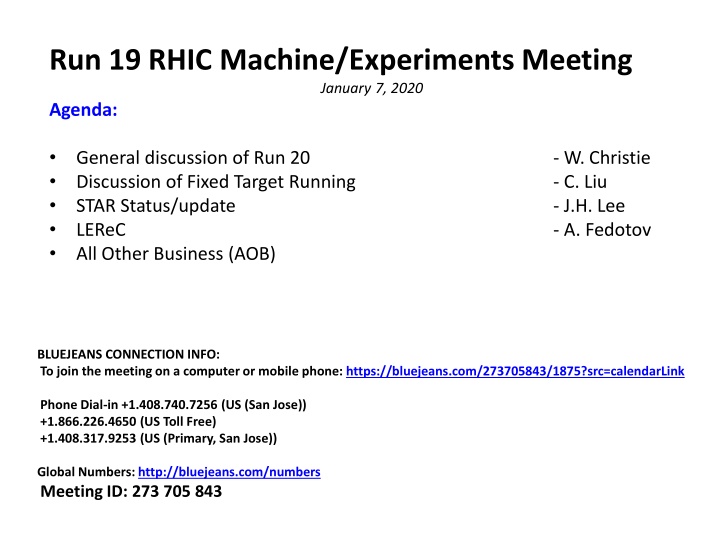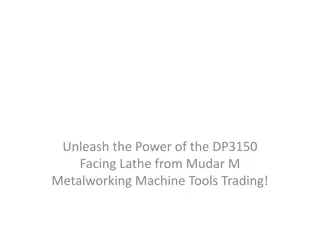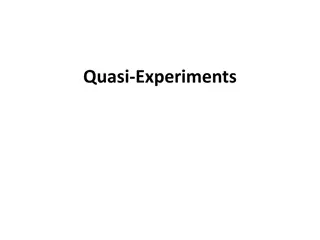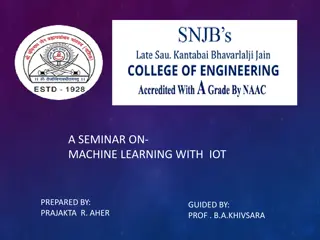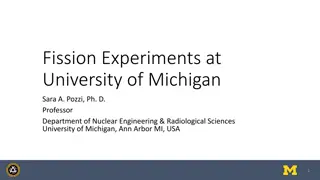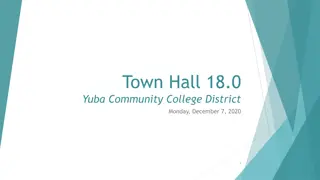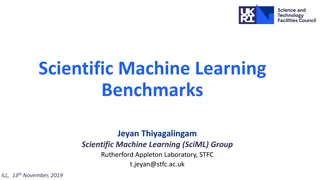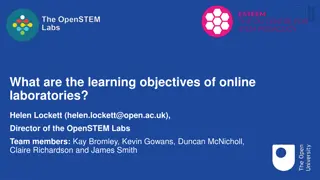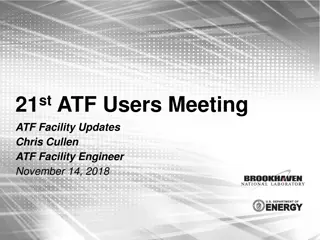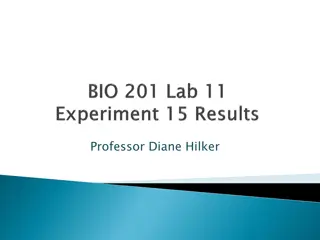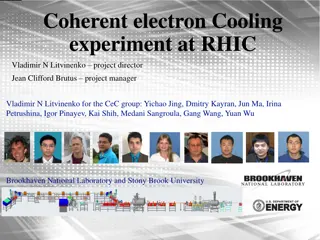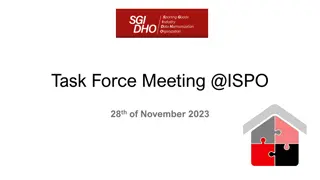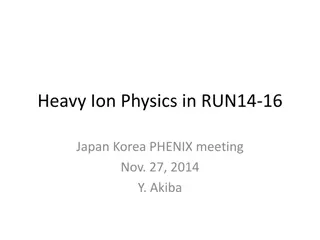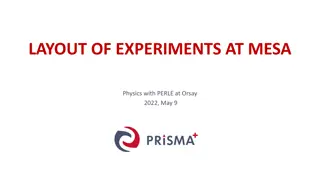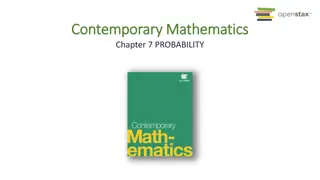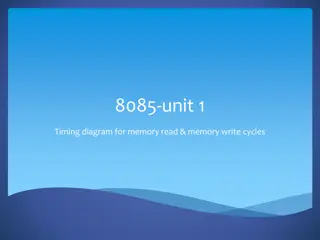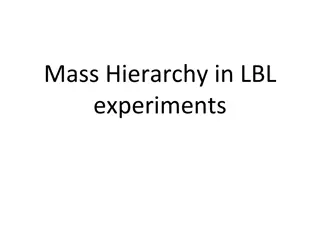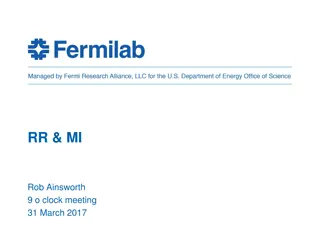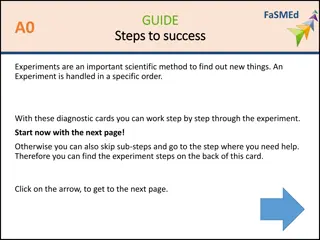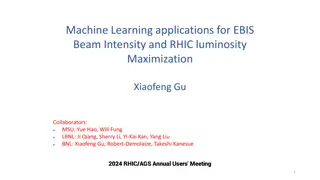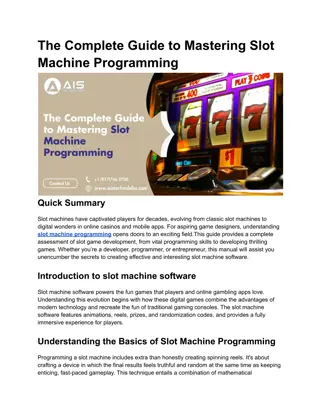Summary and Updates from RHIC Machine Experiments Meeting
General discussion and updates from the Run 19 RHIC Machine Experiments Meeting held on January 7, 2020, including discussions on Run 20, Fixed Target Running for STAR, LEReC status updates, and other business matters. Key points covered include the schedule assumptions, interleaving LEReC commissioning with STAR Physics running strategy, STAR's plan for accumulating 100 Mevts, running time estimates, and preliminary fit results for 2020 experiments. Detailed information provided regarding meeting agendas, bluejeans connection, transition plans, and projected running hours for LEReC.
Download Presentation

Please find below an Image/Link to download the presentation.
The content on the website is provided AS IS for your information and personal use only. It may not be sold, licensed, or shared on other websites without obtaining consent from the author.If you encounter any issues during the download, it is possible that the publisher has removed the file from their server.
You are allowed to download the files provided on this website for personal or commercial use, subject to the condition that they are used lawfully. All files are the property of their respective owners.
The content on the website is provided AS IS for your information and personal use only. It may not be sold, licensed, or shared on other websites without obtaining consent from the author.
E N D
Presentation Transcript
Run 19 RHIC Machine/Experiments Meeting January 7, 2020 Agenda: General discussion of Run 20 Discussion of Fixed Target Running STAR Status/update LEReC All Other Business (AOB) - W. Christie - C. Liu - J.H. Lee - A. Fedotov BLUEJEANS CONNECTION INFO: To join the meeting on a computer or mobile phone: https://bluejeans.com/273705843/1875?src=calendarLink Phone Dial-in +1.408.740.7256 (US (San Jose)) +1.866.226.4650 (US Toll Free) +1.408.317.9253 (US (Primary, San Jose)) Global Numbers: http://bluejeans.com/numbers Meeting ID: 273 705 843
N.B. This schedule assumes that we end up with a budget that allows for a 28 Cryo week run. The actual transition date between 11.5 and 9.2 GeV Physics running will be a matter of discussion as the run progresses. It is likely that STAR will request to start/run the Fixed target sometime in mid to late January.
Summary of interleaving LEReC Commissioning with the STAR Physics running Meeting held on December 17, 2018 to discuss Strategy/plan: - Once collisions available, Spend the first about week getting STAR tuned up and the Physics running going. - After this first week of running, start interleaving LEReC commissioning - Idea discussed to schedule for 12 hours every other day (e.g. M, W, F) - Keep schedule flexible so that if for any reason LEReC can t effective use the time it switched back to Physics running. - Also so that if LEReC is making good progress, and more time is desirable, the allotted time can be extended. This is a Strategy/plan to get started on this sharing of the Collider time. Expectation is that once we see how this works we ll discuss if we need any modifications. Rough accounting of LEReC hours per week and planned for this week: 12/10 - 12/16: ~20 hrs LEReC 12/17 - 12/23: 28 hrs LEReC 12/24 - 12/30: 0 hrs LEReC 12/31 1/6: ~24 hrs LEReC 1/7 - 1/13 ~ 31 hrs LEReC Total LEReC ~ 103 hrs (~ 4.3 days) Key: Blue = as run Red = planned
STARs plan is to accumulate 100 Mevts this year for each of the 6 FXT energies. Rough estimate of STAR running time needed per Energy is ~ 16.5 hrs. - assumes average HLT good rate of 1700 Hz Slide from the 12/3/19 STAR Time mtg presentation
Prelim. fit results 2020, beta* 10 m scan Xsec WCM barn Lumi WCM 1024 Xsec DCCT barn Lumi DCCT 10^24 sigma_ x mm sigma_ y mm emit_x emit_y mmmrad mmmrad 1 2 3 7.8 8.1 9.3 7.1 5.2 3.2 6.1 5.9 6.1 8.3 6.8 4.8 2.2 2.0 2.3 1.9 2.1 2.1 3.1 2.5 3.3 2.3 2.6 2.6 Beam size is flat during the store consistent with IPM Emittance from scans 30-50% larger than IPM Cross section used in 2010 was 6 barn (need to find out which signal was used) Xsec based on total beam intensity indicates that VPD sees collision from every crossing (including satellites), sort-of confirmed by Hank Need to add STAR HLT rate to analysis
Cross sections calculated using the HLT extracted luminosity values For Scan #2, mean rate for HLT good (70 cm) ~ 14 Hz Rate = L*sigma -> sigma = Rate/L = 14 Hz/4.3 x 1024 s-2 cm-2 = 3.2 x 10-24 cm2 = 3.2 b For Scan #3, mean rate ~ 9 Hz sigma = Rate/L = 9 Hz/3.1 x 1024 s-2 cm-2 = 2.8 x 10-24 cm2 = 2.9 b Mean sigma 3.0 b, taking an unc. of ~ 1 Hz in each rate gives an unc. of ~.2 , Sigma = 3.0 +- .2 b Compares well with Angelika s average cross section of 3.0 b (ave. over the three scans)
Cross sections calculated using the HLT extracted luminosity values 150 For Scan #2, mean rate for HLT 150 cm vtx ~ 24 Hz Rate = L*sigma -> sigma = Rate/L = 24 Hz/4.3 x 1024 s-2 cm-2 = 5.6 x 10-24 cm2 = 5.6 b For Scan #3, mean rate ~ 16 Hz sigma = Rate/L = 16 Hz/3.1 x 1024 s-2 cm-2 = 5.2 x 10-24 cm2 = 5.2 b Mean sigma 5.4 b, taking an unc. of ~ 1 Hz in each rate gives an unc. of ~.2 , Sigma = 5.4 +- .2 b Considering the missing peripheral fraction of the cross section (HLT req. of 5 or more tracks), and portion of interaction diamond beyond +-150 cm, this looks reasonable.
Some anticipated Issues that well be discussing through out RHIC Run 20 The length of the run (24 vs 26 or 28 Cryo weeks, awaits final FY20 budget) Going into the run, it looks like a significant challenge, that we may not be able to overcome, to fully meet the stated STAR data set (statistics) goals. A key decision will be deciding when to switch from the 11.5 to the 9.2 GeV Physics running. The timescale for this decision is likely sometime in February. When to run the STAR Fixed target program, as well as whether to run it all in the same time period. Likely timescale for this decision is mid January or so. We need to accommodate collider time for the 9.2 and 7.7 LEReC commissioning, as well as the CeC program. What is clear now is that we have to be very careful and deliberate in scheduling and efficiently utilizing every day of RHIC Run 2020. These are what I anticipate as being the key issues we ll be dealing with during the run. Any additional issues that people would like to add to the list?
